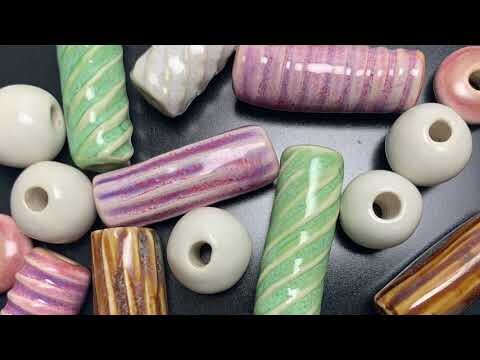Looking to master the art of Raku kiln firing? In this article, we will walk you through the essential steps to achieve stunning results with this unique firing technique. From preparing your kiln to controlling the firing process, we’ve got you covered. Get ready to elevate your pottery game with these expert tips and tricks!
What are the steps of raku firing?
The first step of raku firing begins with shaping the clay and allowing it to dry to a specific moisture level. Next, the pieces are bisque-fired in a kiln to remove any remaining moisture and strengthen the clay body. Once bisque-fired, the ceramic ware is ready for glazing, starting with the application of a specialist Raku glaze.
Must you bisque fire before raku firing?
Yes, before raku firing, it is essential to bisque fire your pots. This initial firing process helps to remove any moisture from the clay and prepare it for the intense heat of the raku firing. Using a clay specifically designed for raku firing, with good thermal shock characteristics, is crucial to ensure the best results.
Once your pots have been bisque fired, you have the creative freedom to choose how to finish them for the raku firing. Whether you decide to apply slip for unique color effects, experiment with different glazes for stunning finishes, or simply leave the pot bare for a more natural look, the choice is yours. Each option presents an opportunity to showcase your artistic vision in the final raku firing.
By following the necessary steps of bisque firing and choosing the right clay, you can confidently proceed to the raku firing process. With proper preparation and creative decision-making in applying slip, glaze, or leaving the pot bare, you can achieve beautiful and unique results in your raku-fired pottery.
What is the temperature of a raku kiln firing?
Raku kiln firing typically occurs at temperatures between 800–1,000 °C (1,470–1,830 °F), making it a relatively low-temperature firing process. This allows for the unique and unpredictable results that raku pottery is known for, as the quick cooling process creates crackled glazes and metallic effects. The Western raku tradition involves bisque firing the stoneware clay body at 900 °C (1,650 °F) before the final glost or glaze firing, which falls into the cone 06 firing temperature range.
The lower firing temperatures of raku kiln firing contribute to the distinctive aesthetic of raku pottery. The rapid cooling process that follows the high-temperature firing creates the signature crackled glazes and metallic luster that are characteristic of raku pottery. By bisque firing the stoneware clay body at 900 °C (1,650 °F) and then glost or glaze firing it between 800–1,000 °C (1,470–1,830 °F), potters are able to achieve the vibrant and unpredictable results that define the Western raku tradition. This temperature range falls within the cone 06 firing temperature range, allowing for the stunning visual effects that raku pottery is known for.
In conclusion, the temperature range for raku kiln firing is crucial in achieving the unique and stunning results that define this pottery tradition. By bisque firing at 900 °C (1,650 °F) and glost or glaze firing between 800–1,000 °C (1,470–1,830 °F), potters are able to create the crackled glazes and metallic effects that are characteristic of raku pottery. This lower firing temperature allows for the rapid cooling process that produces the vibrant and unpredictable visual effects that make raku pottery so distinctive.
Mastering the Art of Raku Firing
Discover the ancient technique of Raku firing and unlock your artistic potential with our comprehensive guide. Learn how to manipulate glazes and control the firing process to create stunning, one-of-a-kind pieces that showcase your unique style and creativity. With our expert tips and tricks, you’ll soon be mastering the art of Raku firing and producing masterpieces that will leave a lasting impression.
Delve into the world of Raku firing and elevate your pottery skills to new heights. From understanding the science behind the process to experimenting with different firing techniques, our step-by-step instructions will help you achieve beautiful results every time. Whether you’re a seasoned artist or a beginner looking to expand your horizons, our guide to mastering the art of Raku firing will inspire you to push the boundaries of your creativity and create truly exceptional pieces.
Elevate Your Pottery with Raku Kiln Techniques
Elevate your pottery game with the unique and stunning Raku kiln techniques. Raku firing involves removing the pottery from the kiln while it’s still glowing hot and placing it in a container filled with combustible materials. This process creates one-of-a-kind patterns and colors on the surface of the pottery, making each piece truly exceptional.
By incorporating Raku kiln techniques into your pottery practice, you can add a touch of mystery and intrigue to your creations. The unpredictable nature of Raku firing means that each piece will have its own distinct characteristics, ensuring that no two pieces are ever the same. This technique allows for endless experimentation and creativity, giving you the opportunity to push the boundaries of traditional pottery making.
Take your pottery to the next level by mastering the art of Raku kiln techniques. Whether you’re a beginner or a seasoned potter, exploring the world of Raku firing can open up a whole new realm of possibilities for your artistic expression. Elevate your pottery with the mesmerizing and awe-inspiring results that only Raku kiln techniques can provide.
Incorporating the traditional Japanese technique of Raku firing into your ceramic process can yield stunning and unique results. By following the key steps of preparing the kiln, firing the pieces, and post-firing reduction, artists can achieve vibrant colors and crackled glazes that add depth and character to their creations. Embracing the unpredictable nature of Raku firing can lead to unexpected beauty, making it a truly exciting and rewarding method for artists to explore in their ceramic work.



